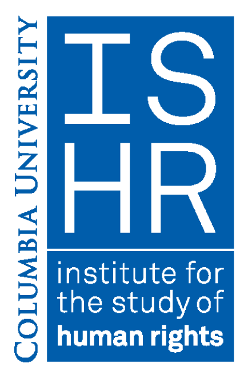| Title | Editor’s Introduction: Witnessing, Testifying, and History |
| Publication Type | Journal Article |
| Year of Publication | 2009 |
| Authors | Martha J. Cutter |
| Journal | MELUS: Multi-Ethnic Literature of the U.S. |
| Volume | 34 |
| Issue | 1 |
| Pagination | 5-11 |
| ISSN | 1946-3170 |
| Abstract | In lieu of an abstract, here is a brief excerpt of the content: “Inquire, Learn, Reflect.” This inscription graces the paving stones leading to Kent State University’s May 4th Memorial, which commemorates the day in 1970 when members of the National Guard gunned down four unarmed students during an anti-war protest. The stones bear silent witness to the horror of that day, but to what, exactly, do they testify? According to the May 4th Collection, an online exhibit of texts relating to the shootings, the inscription “provides visitors an opportunity to encourage a learning process, and to reflect on how differences may be resolved peacefully” ( www.library.kent.edu/may4 ). But is this enough? At what point (if any) does reflection slide over into testimony, into demanding an accounting, or even into action? Should the memorial have a third term that is more active: “Inquire, Learn, Tell”? What lessons can we gather from history, if not the necessity of speech, which might eventually lead to action, or even be a form of action in the face of inaction? Multi-ethnic authors and writers often bear witness to the traumas of history. However, many of the articles gathered in this issue of MELUS suggest that testifying and witnessing can have a more active and resistant social function. Lynn Z. Bloom’s essay “Witnessing” inaugurates a new MELUS column in which individuals reflect on their personal experiences with racial politics, multi-ethnic concerns, or the evolution of our field of study. Bloom’s powerful piece about her involvement in anti-war protests during the 1960s, alongside Dr. Martin Luther King, Jr., and Dr. Benjamin Spock, argues that the act of bearing witness, even on a small scale, can enact change. For one thing, it can model for our sometimes apolitical students a way of being engaged and involved in their own world and history. It can also help them to see that political struggles are worthwhile—a point apparent to our students after the election of Barack Obama, but perhaps not before. Literature can help them understand these historical struggles, but our own experiences can bring events alive for them and help them see how their participation in history can be active. Certainly we can “inquire, learn, and reflect,” but perhaps as teachers we need to demand more, both of ourselves and our students. We must also bring experiences into language—we must testify and witness as events of history unfold. Of course, the term “history” itself is often problematic, especially for multi-ethnic writers, and this is the central topic of a number of the essays in this issue. In “Seeing ‘from the far side of the Hill’: Narrative, History, and Understanding in Kindred and The Chaneysville Incident” Kelley Wagers scrutinizes persuasively how history comes to be told, but also the limitations of history-making as it has been understood. Modern theorists have contested history’s claim to truth, accuracy, and objectivity, and some have even argued that emplotment—the placement of historical events within narrative trajectories—can lead to innovative versions of past stories that correct the mistakes of historical erasure and generate new histories. Narrative opens up a productive space in which to formulate a more intimate relationship with history, generally, and more specifically the history of slavery. According to Wagers, Octavia Butler’s Kindred (1979) and David Bradley’s The Chaneysville Incident (1981) explore the link between historical knowledge and imaginative narrative, but they also query the processes of fashioning historical knowledge through narrative forms; Butler and Bradley “investigate acts of writing as modes of punishment and resistance, means of isolation and connection (including the professional and market forces that enable and circumscribe the movements of authors and texts), and methods of recognition and estrangement in which the fashioning of familiarity can be as dangerous as the prospect of forgetting.” Butler’s and Bradley’s protagonists (both of whom are writers) create new texts that tie them to past and present communities, but they also learn about the limitations of such histories. Kindred and The Chaneysville Incident, then, imagine ways for historical experiences to be witnessed, acknowledged, and valued without being finally understood; both authors refuse to let narrative completely manage or contain historical events. Gaps and silences... |
| URL | http://muse.jhu.edu/journals/melus/v034/34.1.cutter.html |
| DOI | 10.1353/mel.0.0010 |
| Short Title | Editor’s Introduction |





